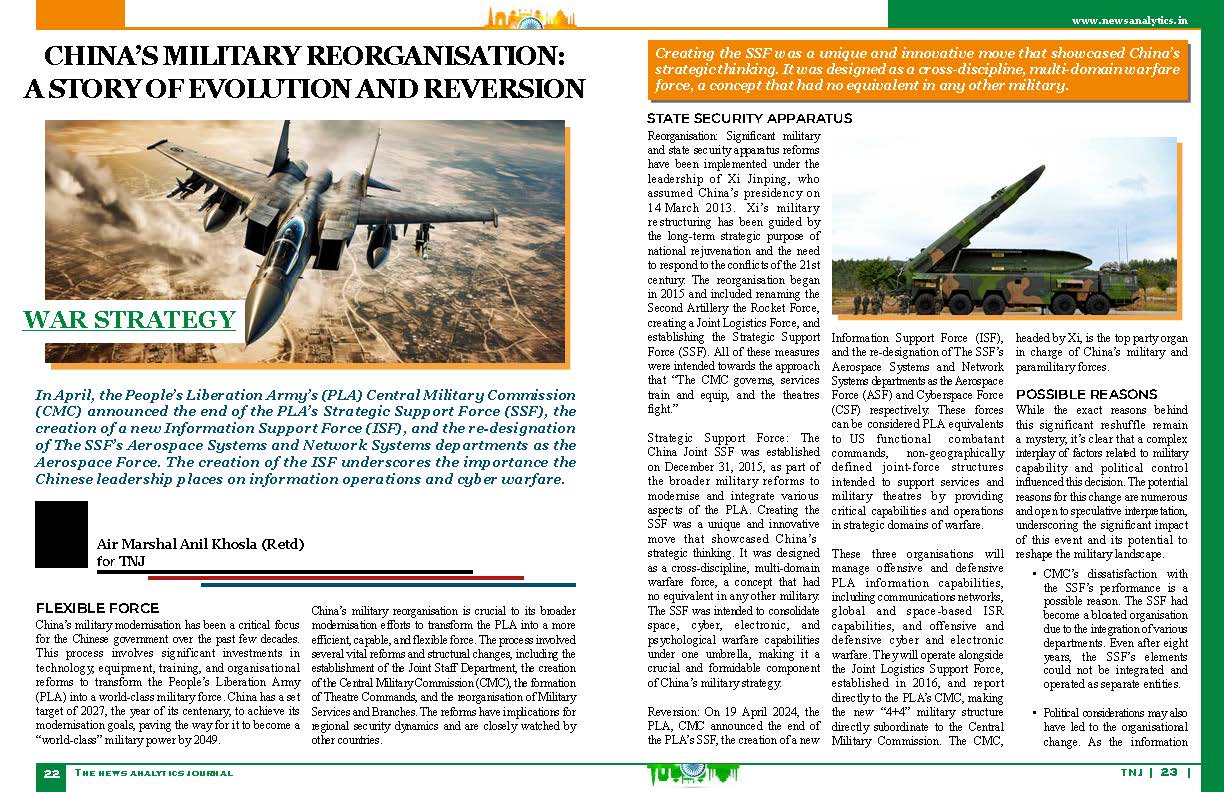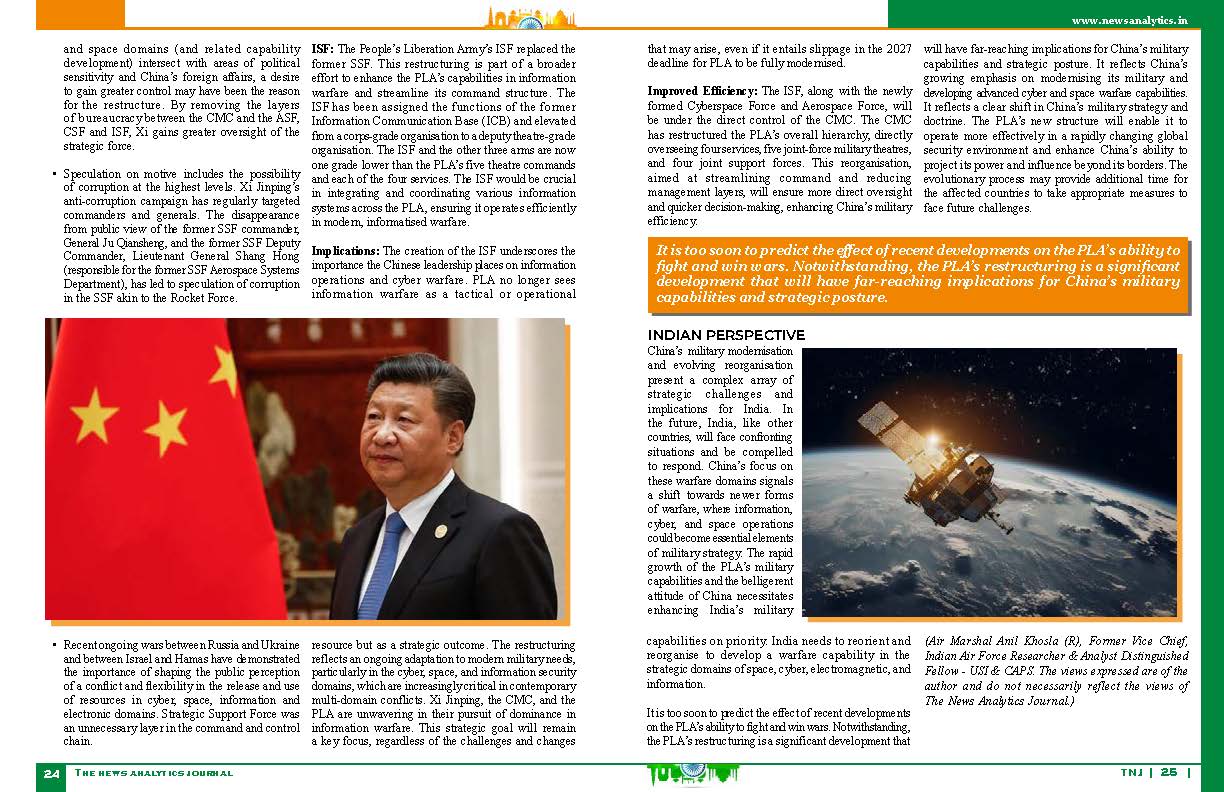
My Article published on the Chanakya Forum Website.
The air transport fleet of any Air Force contributes to the air power attributes of speed, reach, flexibility, and responsiveness. Besides speedy induction and sustenance of forces, it is used for rescue missions. The air transport platforms are also utilised in force multiplier roles like air-to-air refuelling (AAR), Airborne Warning and Control Systems (AWACS), Intelligence, Surveillance and Reconnaissance (ISR), and Airborne Command Posts, Special Forces operations, etc. Most armed forces possess several transport aircraft for these crucial roles. Indian Air Force has numerous air transport platforms in its inventory. However, due to the ageing of the existing fleet and the increasing demands on air transport, there is an urgent need for new medium transport aircraft (MTA).
Medium transport aircraft are a category of military and civilian aircraft designed to transport cargo, troops, and equipment over medium ranges. These aircraft usually have a payload capacity of between 20 and 30 tonnes. They have large cargo holds to accommodate various cargo types, including oversized equipment, vehicles, and pallets. They also have configurable interiors to switch cargo, passenger, and medical evacuation roles. Modern navigation and communication systems ensure safe and efficient operations in diverse environments. They can take off and land on short runways (paved and unpaved) in harsh and remote locations with limited infrastructure. These aircraft are crucial in supporting military logistics, humanitarian aid, disaster response, and various commercial cargo operations due to their balance of range, payload, and versatility.
Post-independence, the IAF operated a mix of An-12, Packet Fairchild, Caribou, Dakota and Avro aircraft for Air Maintenance and Logistics support. In the early 1980s, the transport fleet was modernised with the induction of IL-76 aircraft (40 tonnes) and An-32 aircraft (4-6 tonnes). The Indian Air Force (IAF) now operates two types of fixed-wing transport aircraft: strategic heavy airlift aircraft and lesser-capacity tactical airlift aircraft. For strategic airlift purposes, the IAF operates 47-tonne capacity IL-76 and 77-tonne capacity C-17 III Globemaster aircraft. The IL-76 was procured from the Soviet Union in the 1980s, and the Globemaster was acquired from the United States in 2011. Medium lift and special operations platform includes 20-tonne capacity C-130J Hercules aircraft. For tactical airlift purposes, the IAF uses the vintage An-32 and Avro aircraft, which have been in service for over 50 years. IAF also operates IL-76-based A-50 AWACS aircraft and IL-78 aerial refueling tanker aircraft.
In the 1980s, the availability of An-12s started declining, and they were phased out in 1991-92. For over two decades, the IAF’s transport airlift capability mainly rested on heavy-lift IL-76 and light tactical airlift AN-32 aircraft. This airlift combination was inefficient, as there was no 20-ton airlift aircraft. Medium Transport Aircraft (MTA) requirement was felt as early as 2001. The Russians proposed a HAL-Ilyushin joint development project for a medium-lift aircraft, IL-214, in the 20-tonne payload category. Hindustan Aeronautics Limited (HAL) entered a joint venture with Russia’s United Aircraft Corporation-Transport Aircraft Division in 2012 to design and produce a turbofan-powered military transport aircraft in the 15-20 tonne category. The two countries even signed a pact for co-development. However, for various reasons related to the design, engine, cost and technology transfer, the project was cancelled in 2016.
At its peak, the IAF operated over 200 AN-32 and Avro combinations in the 4-7 tonne tactical airlift category. The British-origin Avro procured in the late 1960s is being replaced by 56 10-tonne capacity Airbus C-295 aircraft. The AN-32 aircraft was upgraded in 2009 and has been the workhorse of the IAF transport fleet. However, they have reached the end of their technical lifespan, and their numbers have now dwindled to a low figure. Sustaining them has become difficult due to the Russia-Ukraine war, which has disrupted the supply of spare parts and maintenance services, underscoring the urgent need for their replacement.
Due to a lack of Indigenous options, the IAF had to opt for acquisition from the international market. In December 2022, the IAF issued a Request for Information (RFI) to purchase medium transport aircraft (MTA) under the “Make in India” category. The RFI mentions the aircraft weight category of 18-30 tonnes, capable of multiple roles. It does not indicate specific numbers but seeks Rough Order of Magnitude (ROM) cost estimates for 40, 60 and 80 aircraft. Large-scale production could be followed up considering the utility in multiple roles, including civilian cargo applications and export prospects. The information sought by IAF from OEMs also includes the scope of technology transfer; possible methods to enhance indigenisation and to set up a dedicated manufacturing line, including design, integration and manufacturing processes in India; capability to undertake indigenous manufacture of systems, subsystems, components and spares; and making India a regional or global hub for manufacturing and maintenance, repair and overhaul (MRO) of the equipment. This project has significant strategic and economic implications and aligns with the government’s Make in India initiative to boost self-reliance in the defence manufacturing sector. It would reduce the dependency on original equipment manufacturers (OEMs) in the long term, especially for maintenance, repair, overhaul, and future upgrades.
The IAF would be interested in the aircraft’s capability to operate from Advanced Landing Grounds (ALGs), high-altitude airfields, and semi-prepared surfaces. It would also want the platform’s suitability for multiple roles such as air-to-air refuelling, airborne surveillance, para dropping, and special operations. Acquisition cost, technology transfer, and production in India for Indian and global markets will be major decision-influencing factors. Possible contenders could be:-
-
- Lockheed Martin’s C-130 J-30 Super Hercules. US aerospace firm Lockheed Martin has responded by offering the latest variant, the C-130 J-30 aircraft. The aircraft claims to have exceptional short take-off and landing capabilities even in higher altitudes and unprepared runways. IAF already operates C-130 aircraft and a few aircraft components are already being produced in India by the TATA Lockheed Martin Aero structure PVT LTD. Thus, this facility could produce complete aircraft domestically under the “Make in India” It would be easier on the Air Force in terms of maintenance and avoidance of another type in the inventory. However, besides being expensive, the aircraft is a 60-year-old design at the end of its production life. Also, there is the issue of technology access and transfer.
-
- Embraer’s KC-390 Millennium. Brazilian Embraer Defence and Security is pitching the C-390 as the market’s most modern military transport aircraft. It is a new design jet aircraft with significant operational advantages. It is a versatile aircraft with fly-by-wire controls and a glass cockpit; it can carry a 26-tonne payload and achieve speeds of up to 870 kilometres per hour. It is optimised for multiple roles with low operating costs. IAF operates Embraer AC variants for VIP travel and airborne early warning and control aircraft. Embraer has expressed keenness to produce in India. Producing a new-generation aircraft would be advantageous from a technology acquisition and Indigenous industry development perspective. However, it has many American-origin components (engines, avionics, and sensors).
-
- Airbus’ A400M Atlas. Airbus Defence and Space is jointly executing a project with Tata Advanced Systems Limited (TASL) to equip the Air Force with 56 C-295. It is offering A400M Atlas aircraft. The aircraft payload carrying capacity is 37 tonnes, higher than the prescribed criteria in the RFI. Airbus asserts that the A400M offers superior payload, range and ability to transport heavy and outsized loads over extended distances, presenting a game-changing potential for the IAF.
-
- Russian IL-276. The Russian company would be more than willing to accommodate India’s interests. This could be an option provided the concerns that forced India to walk out of Joint Venture development of the MTA program earlier are addressed.
Most OEMs collaborate with Indian vendors to manufacture their respective aircraft in India. TATA is already collaborating with Lockheed Martin and Airbus to manufacture the components of the C-130 and complete the assembly of the C-295 aircraft. This collaboration could be expanded further for the MTA. In February 2024, Embraer signed a memorandum of understanding with Indian defence manufacturer Mahindra Defence to manufacture C-390 Millennium aircraft locally in India. Airbus has not yet announced who it will partner with to compete for the project. However, TASL and state-run aircraft manufacturer Hindustan Aeronautics Limited (HAL) could be among the likely options. HAL has offered to design and build a 30-ton payload aircraft in collaboration with an international OEM. These joint ventures should focus on production efficiency, supply chain control, and lower costs.
The IAF has been a regular contributor to the statecraft because of the role played by its air transport fleet. The benefits of its mission capabilities have been utilised both domestically and abroad. However, a balanced inventory of air transport aircraft is essential. There is an urgent need for the induction of medium transport aircraft. Acquiring a modern and capable transport aircraft will enhance India’s airlift capabilities and bolster its defence capabilities. Besides capability enhancement, the MTA project is an excellent opportunity to create a private-public industrial ecosystem for transport aircraft manufacturing in the country. The project will have significant strategic and economic implications. Operational requirements, cost vis-à-vis budget constraints, technology acquisition, boost to make in India, and geopolitical strategic partnerships will be crucial factors in decision-making.
Link to the article on Chanakya Forum:-
Suggestions and value additions are most welcome.
For regular updates, please register here:-
References and credits
To all the online sites and channels.
References:-
- Air Marshal (Dr) Rajeev Sachdeva (Retd), “The Versatile Transport Fleet of the IAF”, SP Guide Publications, Issue: 09-2022.
- IAF RFI for MTA issued on 03 Feb 2023. chrome-extension://efaidnbmnnnibpcajpcglclefindmkaj/https://indianairforce.nic.in/wp-content/uploads/2023/02/RFI-for-MEDIUM-TRANSPORT-AIRCRAFT-1.pdf
- Atul Chandra, “In Need of Lift”, Force news magazine, Jul 2024.
- Air Marshal M Matheswaran AVSM, VM, PhD (Retd), “The resurrection of Medium Transport Aircraft (MTA) Project”, Financial Express. 24 Feb 24.
- Ananth Iyer, “Transport, Tanker, Reconnaissance Aircrafts of the IAF”, Team-BHP, 15 Mar 2023.
- Rahul Manohar Yelwe, “Modernizing the Indian Air Force’s Transport Fleet”, The Diplomat, 10 May 2024.
Disclaimer:
Information and data included in the blog are for educational & non-commercial purposes only and have been carefully adapted, excerpted, or edited from reliable and accurate sources. All copyrighted material belongs to respective owners and is provided only for wider dissemination.


